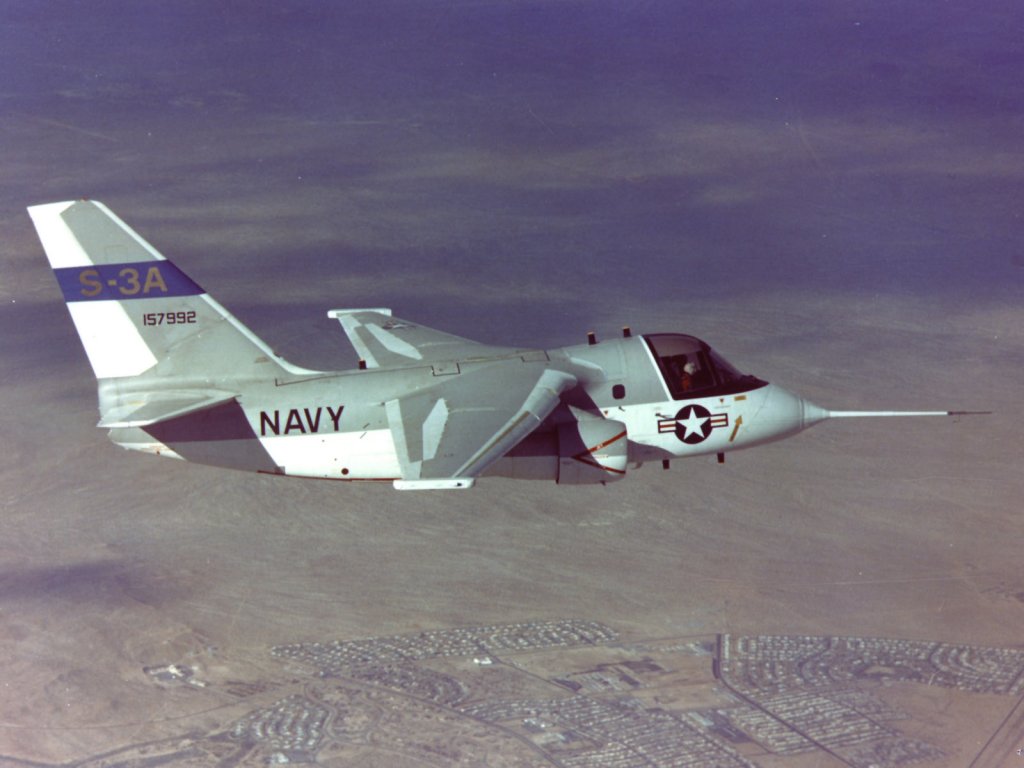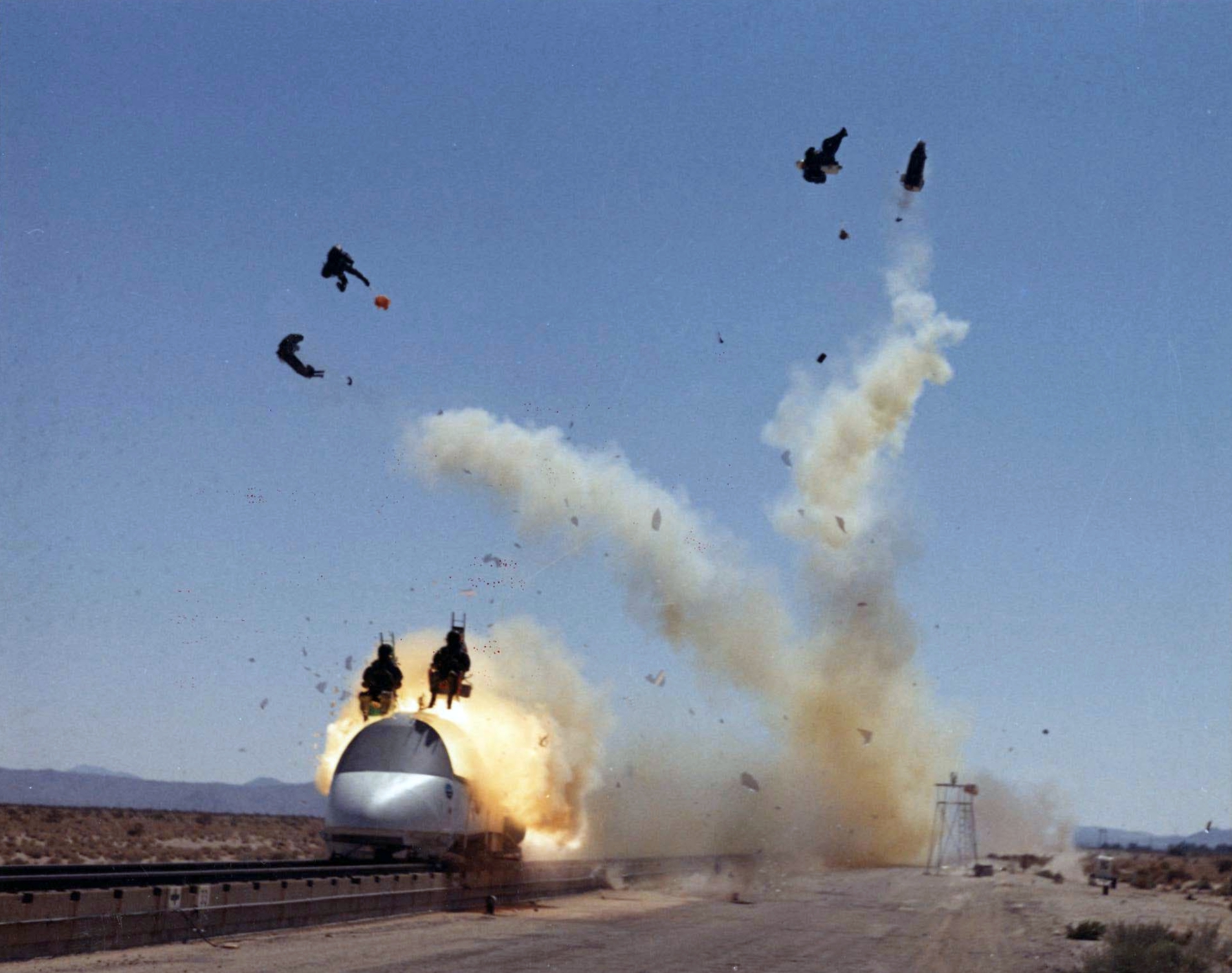|
VS-29
Sea Control Squadron 29 (VS-29) or the "Dragonfires" was a former Sea Control and anti-submarine warfare (ASW) squadron of the US Navy that existed between 1960 and 2004. History As the Tromboners (1960–1975) VS-29 was originally commissioned on April 1, 1960 as the Tromboners by splitting VS-21 in two, the squadron making 12 small deployments in the East Pacific between July 1960 and May 1964 aboard the aircraft carrier as part of CVSG-53 which included the recovery of the NASA Mercury capsules. From June 19, 1964 to December 16, 1964, they made their first Vietnam War cruise on ''Kearsarge'' with Grumman S-2F Trackers followed by three more Vietnam cruises on the carrier in 1966, 1968 and 1969. VS-29 made their first Atlantic deployment which was short-lived between September and November 1971 on . On September 1972, VS-29 made their last deployment with the Grumman Tracker (S-2E) on as part of CVSG-53. First years of using the S-3 Viking (1975–1982) In 1975, th ... [...More Info...] [...Related Items...] OR: [Wikipedia] [Google] [Baidu] |
S-3 Viking
The Lockheed S-3 Viking is a four-crew, twin-engine turbofan-powered jet aircraft designed and produced by the American aerospace manufacturer Lockheed Corporation. Because of its characteristic sound, it was nicknamed the "War Hoover" after the vacuum cleaner brand. The S-3 was developed in response to the VSX program conducted by the U.S. Navy (USN) to procure a successor anti-submarine warfare (ASW) aircraft to the Grumman S-2 Tracker. It was designed, with assistance from Ling-Temco-Vought (LTV), to be a carrier-based, subsonic, all-weather, long-range, multi-mission aircraft. On 21 January 1972, the prototype ''YS-3A'' performed the type's maiden flight. Upon entering regular service during February 1974, it proved to be a reliable workhorse. In the ASW role, the S-3 carried automated weapons and in-flight refueling gear. Further variants, such as the ''ES-3A Shadow'' carrier-based electronic intelligence (ELINT) platform, and the ''US-3A'' carrier-based utility and carg ... [...More Info...] [...Related Items...] OR: [Wikipedia] [Google] [Baidu] |
Lockheed S-3 Viking
The Lockheed S-3 Viking is a four-crew, twin-engine turbofan-powered jet aircraft designed and produced by the American aerospace manufacturer Lockheed Corporation. Because of its characteristic sound, it was nicknamed the "War Hoover" after the vacuum cleaner brand. The S-3 was developed in response to the VSX program conducted by the U.S. Navy (USN) to procure a successor anti-submarine warfare (ASW) aircraft to the Grumman S-2 Tracker. It was designed, with assistance from Ling-Temco-Vought (LTV), to be a carrier-based, subsonic, all-weather, long-range, multi-mission aircraft. On 21 January 1972, the prototype ''YS-3A'' performed the type's maiden flight. Upon entering regular service during February 1974, it proved to be a reliable workhorse. In the ASW role, the S-3 carried automated weapons and in-flight refueling gear. Further variants, such as the ''ES-3A Shadow'' carrier-based electronic intelligence (ELINT) platform, and the ''US-3A'' carrier-based utility and ca ... [...More Info...] [...Related Items...] OR: [Wikipedia] [Google] [Baidu] |
Grumman S-2 Tracker
The Grumman S-2 Tracker (S2F prior to 1962) was the first purpose-built, single airframe anti-submarine warfare (ASW) aircraft to enter service with the United States Navy. Designed and initially built by Grumman, the Tracker was of conventional design — propeller-driven with twin radial engines, a high wing that could be folded for storage on aircraft carriers, and tricycle undercarriage. The type was exported to a number of navies around the world. Introduced in 1952, the Tracker and its E-1 Tracer derivative saw service in the U.S. Navy until the mid-1970s, and its C-1 Trader derivative until the mid-1980s, with a few aircraft remaining in service with other air arms into the 21st century. Argentina and Brazil are the last countries to still use the Tracker. Design and development The Tracker was intended as a replacement for the Grumman AF Guardian, which was the first purpose-built aircraft system for ASW, using two airframes for two versions, one with the detecti ... [...More Info...] [...Related Items...] OR: [Wikipedia] [Google] [Baidu] |
Carrier Air Wing Eleven
Carrier Air Wing Eleven (CVW-11) is a United States Navy aircraft carrier air wing based at Naval Air Station Lemoore, California. The air wing is attached to the aircraft carrier .Carrier Air Wing Eight (CVW 11) - Global Security.org - Access Date 1 January 2007 Mission To conduct carrier air warfare operations and assist in the planning, control, coordination and integration of seven air wing squadrons in support of carrier air warfare including; Interception and destruction of enemy aircraft and missiles in all-weather conditions to establish and maintain local air superiority. All-weather offensive air-to-surface attacks, Detection, localization, and destruction of enemy ships and submarines to establish and maintain local sea control. Aerial photographic, sighting, and electronic ...[...More Info...] [...Related Items...] OR: [Wikipedia] [Google] [Baidu] |
Carrier Air Wing Two
Carrier Air Wing Two (CVW-2) is a United States Navy aircraft carrier air wing based at Naval Air Station Lemoore. The air wing is attached to the aircraft carrier . Subordinate units CVW-2 consists of 9 Squadrons History 1940s-50s Originally established as CVBG-74 (Battle Air Group) on 1 May 1945, it was renamed CVBG-1 on 15 November 1946 before finally being renamed CVG-2 in 1948. During that time, CVG-2 was assigned to (CVB-41). CVG-2 later would see action during the Korean War on board the ''Essex''-class carriers , ''Valley Forge'' and ''Philippine Sea''. During the war, they supported the Inchon Invasion, bombing of North Korea-occupied Seoul and the recapture of Kimpo Airfield. Starting in 1958, the squadron started an 8-year association with the USS ''Midway'' which ended in 1966. 1960s In 1961, the first A4D-2 (A-4B) Skyhawks to join CVW-2 came aboard during a deployment in the Taiwan Strait during tensions between the two chinas (People's Republic of Ch ... [...More Info...] [...Related Items...] OR: [Wikipedia] [Google] [Baidu] |
Anti-Submarine Squadron 29 (United States Navy) Insignia, 1990
An anti-submarine weapon (ASW) is any one of a number of devices that are intended to act against a submarine and its crew, to destroy (sink) the vessel or reduce its capability as a weapon of war. In its simplest sense, an anti-submarine weapon is usually a projectile, missile or bomb that is optimized to destroy submarines. History Before World War I Prior to about 1890, naval weapons were only used against surface shipping. With the rise of the military submarine after this time, countermeasures were considered for use against them. The first submarine installation of torpedo tubes was in 1885 and the first ship was sunk by a submarine-launched torpedo in 1887. There were only two ways of countering the military submarine initially: ramming them or sinking them with gunfire. However, once they were submerged, they were largely immune until they had to surface again. By the start of the First World War there were nearly 300 submarines in service with another 80 in production ... [...More Info...] [...Related Items...] OR: [Wikipedia] [Google] [Baidu] |
Lockheed S-3A Viking Of VS-29 Aboard USS Enterprise (CVN-65) On 2 March 1976 (428-GX-1166979) , in Sunnyvale, California
{{Disambig ...
Lockheed (originally spelled Loughead) may refer to: Brands and enterprises * Lockheed Corporation, a former American aircraft manufacturer * Lockheed Martin, formed in 1995 by the merger of Lockheed Corporation and Martin Marietta ** Lockheed Martin Aeronautics ** Lockheed Martin Space Systems * Lockheed Shipbuilding and Construction Company People * Flora Haines Loughead (1855-1943), American writer, farmer, miner * The brothers who founded the original Lockheed Corporation: ** Allan Loughead (1889–1969), American aviation pioneer ** Malcolm Loughead, American aviation pioneer Other uses * Lockheed (comics), a Marvel Comics character * Lockheed Martin Transit Center Lockheed Martin Transit Center (signed as simply Lockheed Martin station on many signs) is a light rail and transit bus station operated by Santa Clara Valley Transportation Authority (VTA), located in Sunnyvale, California. This station is ... [...More Info...] [...Related Items...] OR: [Wikipedia] [Google] [Baidu] |
Philippines
The Philippines (; fil, Pilipinas, links=no), officially the Republic of the Philippines ( fil, Republika ng Pilipinas, links=no), * bik, Republika kan Filipinas * ceb, Republika sa Pilipinas * cbk, República de Filipinas * hil, Republika sang Filipinas * ibg, Republika nat Filipinas * ilo, Republika ti Filipinas * ivv, Republika nu Filipinas * pam, Republika ning Filipinas * krj, Republika kang Pilipinas * mdh, Republika nu Pilipinas * mrw, Republika a Pilipinas * pag, Republika na Filipinas * xsb, Republika nin Pilipinas * sgd, Republika nan Pilipinas * tgl, Republika ng Pilipinas * tsg, Republika sin Pilipinas * war, Republika han Pilipinas * yka, Republika si Pilipinas In the recognized optional languages of the Philippines: * es, República de las Filipinas * ar, جمهورية الفلبين, Jumhūriyyat al-Filibbīn is an archipelagic country in Southeast Asia. It is situated in the western Pacific Ocean and consists of around 7,641 islands t ... [...More Info...] [...Related Items...] OR: [Wikipedia] [Google] [Baidu] |
Operation Fiery Vigil
Operation Fiery Vigil was the Noncombatant Evacuation Operation (NEO) emergency evacuation of all non-essential military and U.S. Department of Defense civilian personnel and their dependents from Clark Air Base and U.S. Naval Base Subic Bay during the June 1991 eruption of Mount Pinatubo in the Republic of the Philippines. This non-combat operation resulted in the transfer of roughly 20,000 people from Clark Air Base and U.S. Naval Base Subic Bay back to contiguous United States, by way of Cebu, Philippines. The commanding general, 13th USAF, was in command of the joint task force. Timeline ;16 July 1990: A 7.8 earthquake strikes the island of Luzon, Philippines. The epicenter was near the town of Rizal, Nueva Ecija, roughly from Mount Pinatubo. This earthquake caused a landslide, some local tremors, and a brief increase in steam emissions from a preexisting geothermal area at Mount Pinatubo. ;March–June 1991: Magma rising toward the surface from more than benea ... [...More Info...] [...Related Items...] OR: [Wikipedia] [Google] [Baidu] |
Naval Exercise
A military exercise or war game is the employment of military resources in training for military operations, either exploring the effects of warfare or testing strategies without actual combat. This also serves the purpose of ensuring the combat readiness of garrisoned or deployable forces prior to deployment from a home base. While both war games and military exercises aim to simulate real conditions and scenarios for the purpose of preparing and analyzing those scenarios, the distinction between a war game and a military exercise is determined, primarily, by the involvement of actual military forces within the simulation, or lack thereof. Military exercises focus on the simulation of real, full-scale military operations in controlled hostile conditions in attempts to reproduce war time decisions and activities for training purposes or to analyze the outcome of possible war time decisions. War games, however, can be much smaller than full-scale military operations, do not typic ... [...More Info...] [...Related Items...] OR: [Wikipedia] [Google] [Baidu] |
Exercise RIMPAC
RIMPAC, the Rim of the Pacific Exercise, is the world's largest international maritime warfare exercise. RIMPAC is held biennially during June and July of even-numbered years from Honolulu, Hawaii, with the exception of 2020 where it was held in August. It is hosted and administered by the United States Navy's Indo-Pacific Command, headquartered at Pearl Harbor, in conjunction with the Marine Corps, the Coast Guard, and Hawaii National Guard forces under the control of the Governor of Hawaii. The US invites military forces from the Pacific Rim and beyond to participate. With RIMPAC the United States Indo-Pacific Command seeks to enhance interoperability among Pacific Rim armed forces, as a means of promoting stability in the region to the benefit of all participating nations. It is described by the US Navy as a unique training opportunity that helps participants foster and sustain the cooperative relationships that are critical to ensuring the safety of sea lanes and security on ... [...More Info...] [...Related Items...] OR: [Wikipedia] [Google] [Baidu] |
_insignia%2C_1990.png)


_insignia_1973.png)

